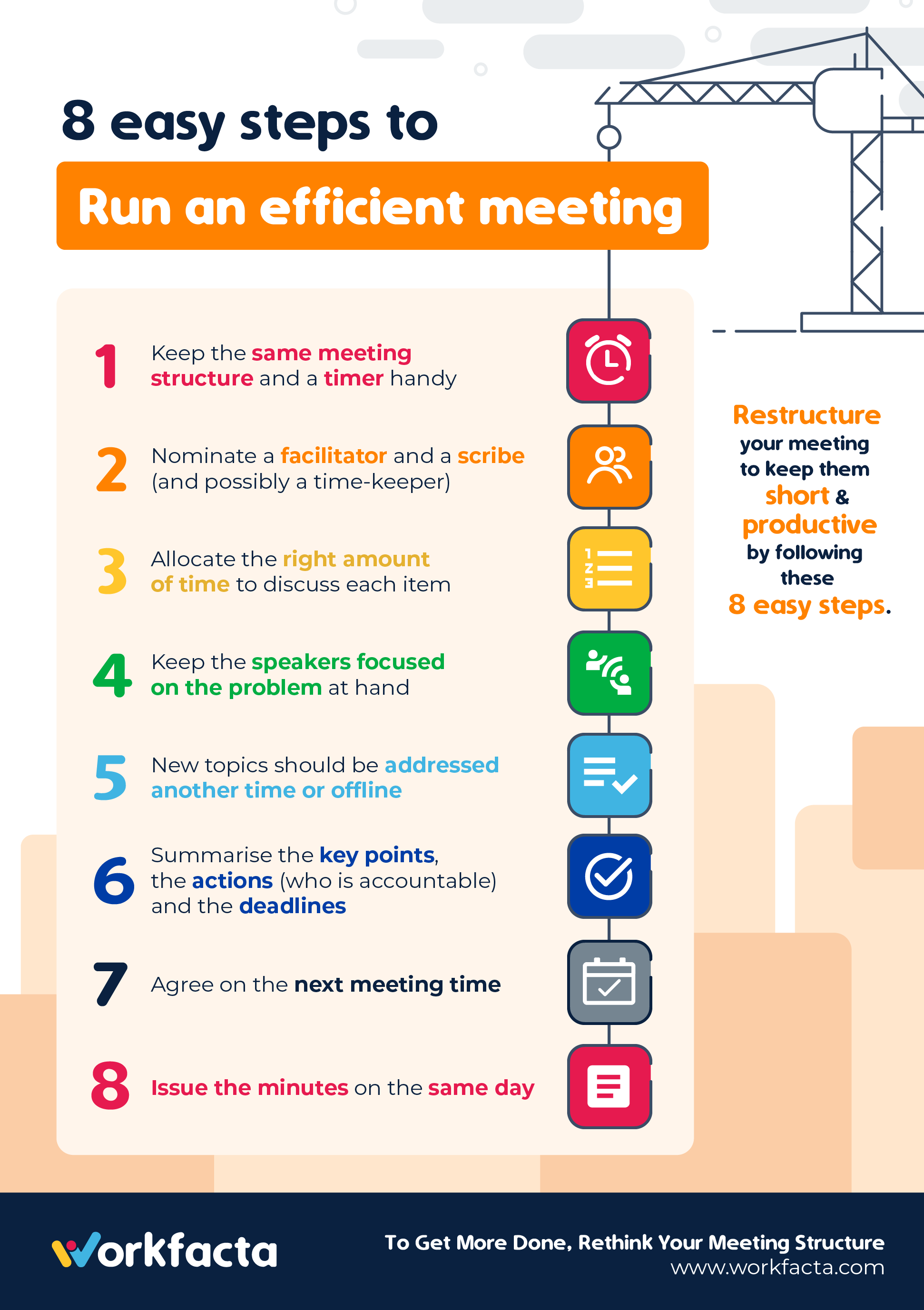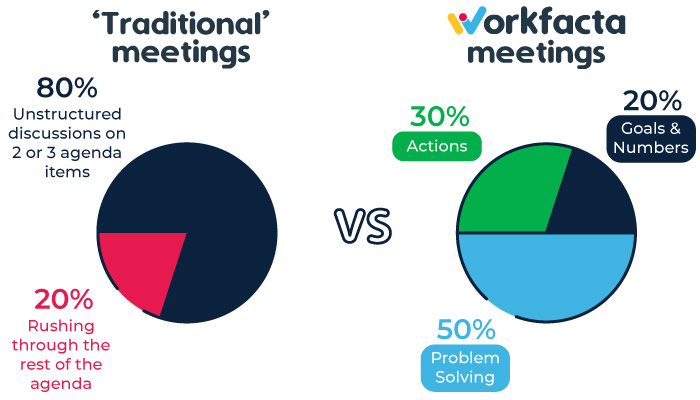
MEETINGS | PRODUCTIVITY | COMMUNICATION | REMOTE WORKING
To Get More Done, Rethink Your Meeting Structure
To Get More Done, Rethink Your Meeting Structure
 Catherine Lethbridge
Catherine Lethbridge
Published 24/01/2022
Collaborating has never been easier, yet productive meetings is still an issue for some companies.
To get more done, we should rethink the way we structure our meetings.
The pandemic forced us to innovate how we communicate and interact: Zoom, Slack, Teams, WeChat, WhatsApp, and even the old Messenger make collaborative work a lot easier. In addition, a Stanford study found that working from home increased work satisfaction and employee’s productivity by 13%. Companies that embrace this hybrid way of working have even seen their attrition rate cut by 50%. This sounds like an ideal scenario for everyone: work-life balance, more productivity, and better collaboration. Yet, why are companies still struggling to get things done?
. . .
Blame “pointless interactions”
A McKinsey article blames “pointless interactions”: teams communicate more, but their interactions have a lower value. This energy-draining form of communication hampers decision-making and interferes with their creative time – when innovative ideas are born.
Daily stand-ups, weekly meetings, informal phone calls and two-way chat are here to stay, but giving them structure is the new way to get more things done. 80% of executives are already rethinking the cadence and flow of their teams’ meetings: structured collaboration and clear intent is the new way forward.
. . .
The art of facilitating a meeting
There are many ways meetings can turn into “pointless interactions”. Sometimes one person takes charge of the entire meeting, leaving little room for others to participate and enrich the discussion. At other times, too many contributors lead to long and windy meetings. The art of facilitating a meeting is to choose the right format for the right intent. Are you broadcasting information? Is it a brainstorming session? Should it be short and concise for busy executives or very detailed for an operational meeting?
Facilitate a meeting like you would run a talk show: hand out a program, have a moderator, conduct your Q&A, time-box the free talks and conclude with key takeaways. In the meeting world, this structure translates into: have an agenda, nominate a facilitator and a scribe, ask the right questions, limit the chit-chats and hand out the meetings minutes.
. . .
In practicality, running effective meetings is challenging
Here is a scenario I have experienced through:
The traditional session is run by the person who called for the meeting. If I am lucky, an agenda is issued a day before the event. There is little direction on what is expected of me: am I meant to produce something or invited as a mere observer? The facilitator runs the first couple of points in the agenda (there are eight items), which takes 80% of the time. Some debates and personal opinions are raised, sometimes heated discussions surface, and I would stifle a yawn – still uncertain about my role in the meeting. Suddenly, someone asked me a question, but I hadn’t followed the train of thought.
Embarrassed, I would shuffle uncomfortably on my seat and ask for a summary before providing my inputs. I am not sure that the minute taker has captured the salient points. Still, nobody is making any comments, so I assume that my issues and requests have been noted and turned into actions. There are no mentions, however, of deadlines. The six other items won’t be discussed this time around, but we all knew this.
The next meeting will be the same, I already know it, and I dread it.
. . .
Here is how to give structure to your meetings to keep them short and productive:
Give cadence to your meetings
The art of facilitating meetings is not something we are born with, much less running an effective one. However, here are eight easy steps to make facilitating a meeting easier:
- Keep the same meeting structure and a timer handy,
- Nominate a facilitator and a scribe (and possibly a time-keeper)
- Allocate the right amount of time to discuss each item,
- Keep the speakers focused on the problem at hand,
- New topics should be addressed another time or offline,
- Summarise the key points, the actions (who is accountable) and the deadlines,
- Agree on the next meeting time,
- Issue the minutes the same day.
You can use many apps to systemise scheduling a meeting, record an agenda and even integrate in your calendar. However, none of these apps help facilitate an efficient and effective meeting, nor promote a collaborative approach to problem-solving and decision-making. Most of this relies on the facilitator.

Workfacta: 8 Easy Steps to Run an Efficient Meeting.
. . .
Workfacta Structured Meeting
A system like Workfacta can help you form strong habits to run effective and efficient meetings. The software has a built-in workflow that keeps the meetings you run very disciplined.

Workfacta meeting workflow.
A typical Workfacta workflow meeting is structured this way:
- 20% time spent on announcing news, goals status and reporting on critical numbers (about 10 minutes, based on an hour-long meeting)
- 30% time spent on action lists and their status (about 20 minutes, based on an hour-long meeting)
- 50% time spent on problem-solving (about 30 minutes, based on an hour-long meeting)
Any new topics are recorded in a new list, minutes are automated and sent to your inbox within seconds. The team performance score gives you an idea of how well the meeting went.
Rinse and repeat.
Now, my weekly four-member team meetings last on average 30 minutes (50% time decrease since we first started).
Productive meetings aren’t just about having a facilitator and an agenda. With the support of an effective platform, like Workfacta, it is easy to stop falling into bad habits. Avoid meeting dread by structuring your meetings efficiently and being disciplined.


